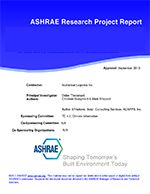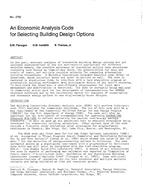With the increasing need for fuel conservation, the incentive for developing efficient residential oil-heating equipment is greater than ever before. Most of the past development effort on oil-fired space-heating equipment was directed to burners having good reliability and low cost. Fuel economy was a general goal, but not focused to the extent that it is now. Efforts over the past 20 years that were directed toward developing low-capacity burners had not been rewarded with a substantial market. However, the market-place now is ready for low-capacity burners, to minimize the detrimental effects on seasonal efficiency that burner oversizing can bring about.
This paper describes a review of technology that should be considered in the design of efficient residential oil-burning equipment having capability for reliable, low-capacity operation. It is concluded that the following concepts should be further pursued:
— Modified high-pressure atomizing systems (anti-clogging nozzles, nozzle-line preheaters, return-flow nozzles)
— Alternative methods of atomization (air, ultrasonic, thermal aerosol generators)
— Blue-flame burners
— Pulse-combustion systems
— Condensing-type heat exchangers
R&D focus is recommended on aspects of sensitivity to fuel quality, pollutant emissions, and long-term reliability.
Citation: Symposium, ASHRAE Transactions, Volume 87, Part 1, Chicago, Illinois
Product Details
- Published:
- 1981
- Number of Pages:
- 26
- File Size:
- 1 file , 15 MB
- Product Code(s):
- D-CH-81-09-2


